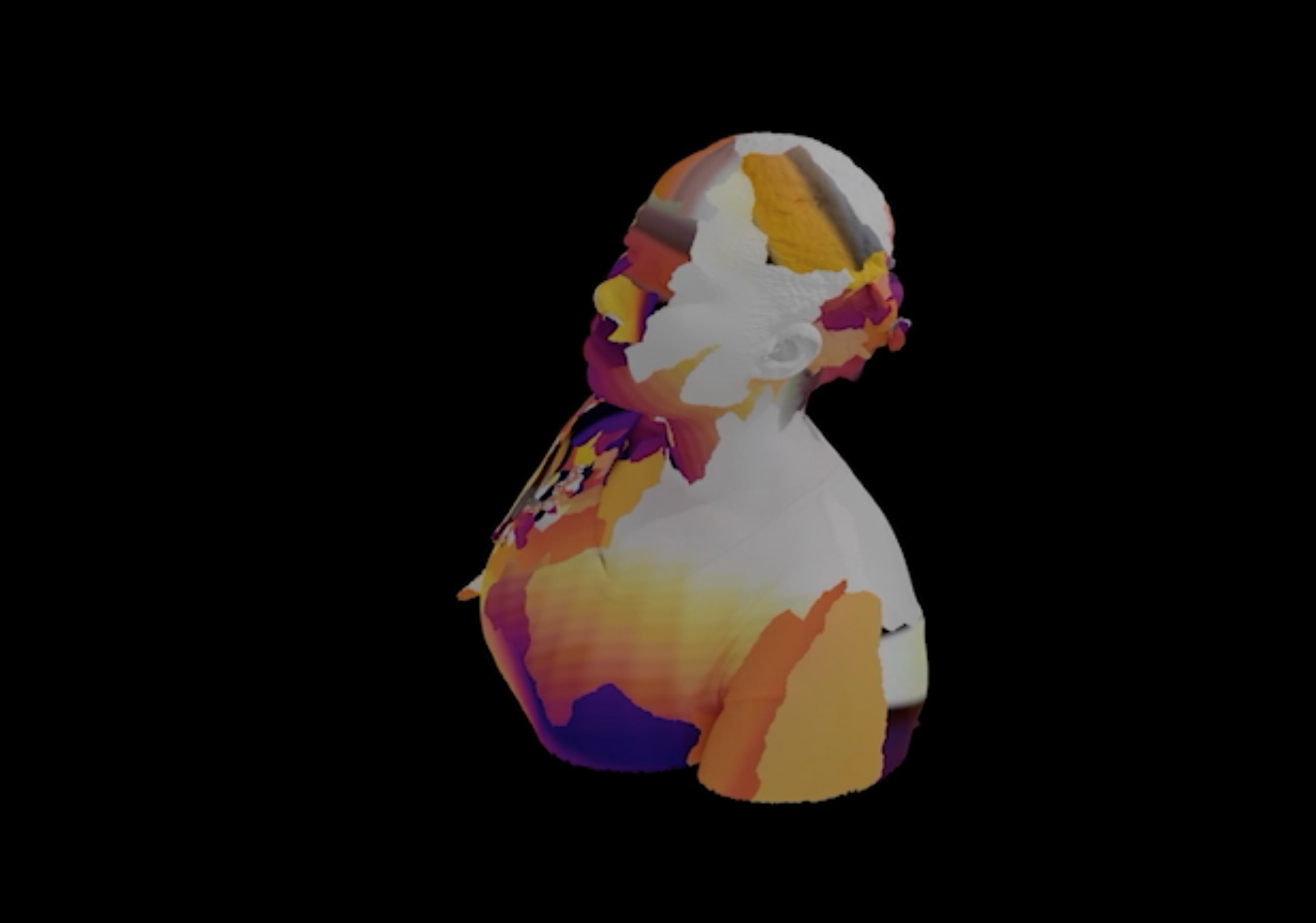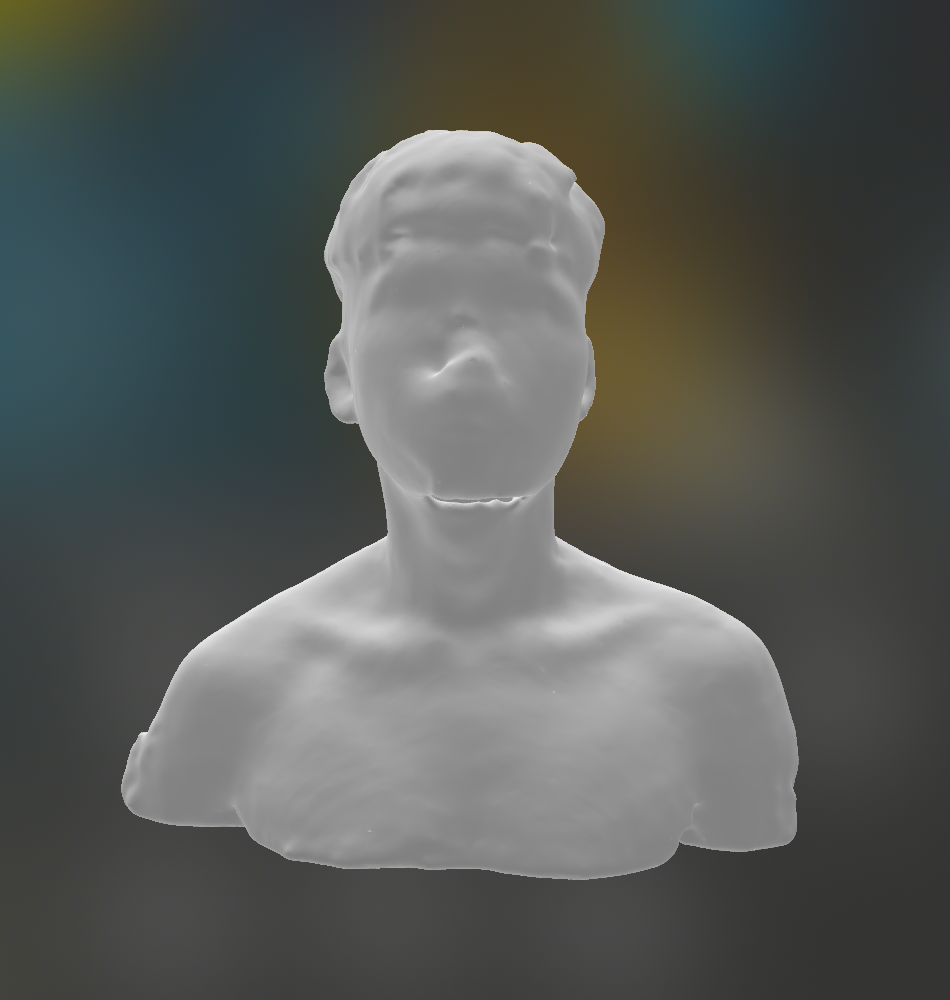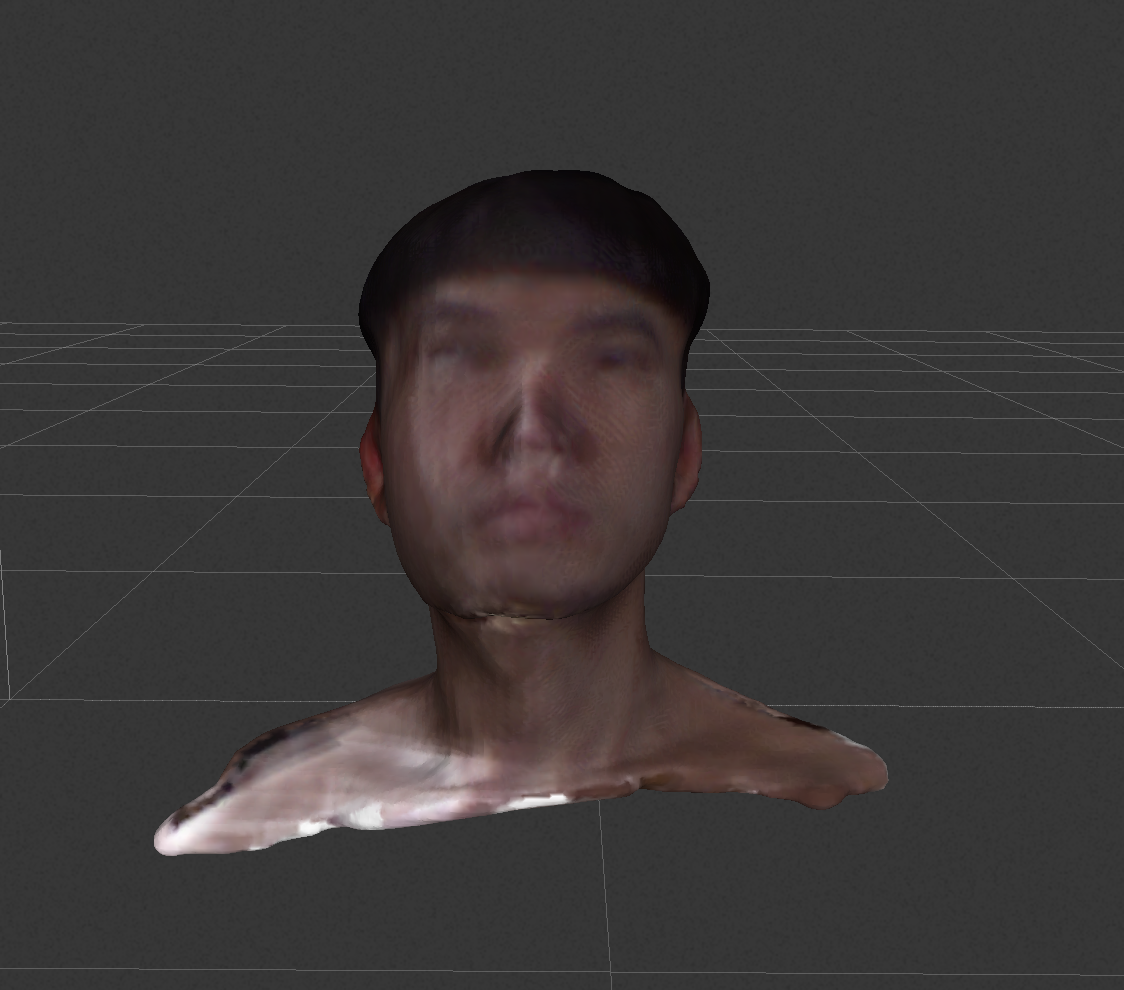

I am my sex slave
Rebuilding my virtual body discovering identity transform in the digital world
Occupy gently
Graciously
Generously
Ruminating in the substance of post individuality
Beyond man made constraints
Sociopolitical hurdles
I have transcended
Leaving the mortal skin behind
-(Hill, "Post-Identity")
produced by: Chia Yang Chang
The artefact video.
Abstract.
Is our body is the prison of our soul? Nowadays, we have various way to express our self-presentation, we filter the photos, creates the Avatar. In other words, we are living in an identity-masking world. We thought that we have the free-mind to decide how to impress others. However, Goffman(1959) clams that different environment will give you different cues to shape the impressions, which means the environment potentially impacts what we decide to show the public. In various social media, you can see how obvious the differences in the profile picture that the user put. For instance, a viral challenge in January 2020, public and celebrities started to show their different picture that they would use for Instagram, LinkedIn, Facebook and Tinder.
The emerge of the simulation games, people found a new way to explore their self-presentation beyond the physical body; they could finally create an outlook that is not restricted in age, gender and species. This helps them to get away from the label stick by their physical body. However, one of the simulation game "sims online" launched in 2002 becomes a crisis in the online virtual world experience. A research investigates the reason why users felt disconnected to their Avatar in games is that the culture is being programmed in the game per se. The game should let every user create their own culture instead of learning the culture.
This project will focus on the process of produce a virtual body by different 3D scanning platforms and techniques, exploring the possibility of our identity development without the restriction of the physical body in the real-world.
my_head 3D scanning object artefact.
Image: week12 slides artefact by Clareese Hill
Existing works.
On week12, the lecture guest Clareese Hill present an artwork that she scans her body and use dynamic texture cover her 3D shape. Her project reminds me of the concept of using the virtual world to eliminate the experience of bullying, exclusion, marginalization and rejection. Therefore, it makes me want to investigate how can our identity be shaped without the restriction of this mortal body.
video: Becoming Dragon, 3 Minute Documentation- Micha Cardenas
In Micha Cárdenas project "Becoming Dragon", she states the goal in this project is to explore identity as a process of social feedback, in the sense that Donna Haraway describes "becoming with." She examined the potential of the identity and gender being transformed in the technology.
In her discussion with Sandy Stone "Gender and desire world", mentioned there are real people stuck in a real body, they are also experiencing real oppression as a result of their personality.
However, how to keep our connection with Avatar in as "Away from keyboard" status, overcoming the dualism of mind/body, real/virtual and self/others that have been a problematic part of thinking about technology.
video: SANCTUM - Zach Blas
Zach Blas "SANCTUM" in 2018, creates a fetish environment in a mystical environment that perverts sex dungeons. He illustrates individuals rapturous desire to expose oneself to digital platforms is made manifest.
SANCTUM probes the correlations of digital exposure and control, belief and desire, which arouse both joy and injury. This makes me wanna experiment with the fetish part that I always want but never have a chance to explore. I'm the one who is desiring to expose myself to the digital platforms.
Methods.
<< Why 3D scanning? <<
Some research indicates that individuals who create avatars reflecting an ideal self-image may experience a stronger avatar-self parasocial relationship, compared to those who created avatars reflecting their actual body (Jin, 2010a).
However, in this project will more focus on blurring the boundaries between self-presentation in real-body and virtual body. Therefore, 3D scanning is not only the fastest tool to convert our body into a 3D object, but also reflect our physical-world identity, instead of creating a body that covers physical flaws. In this case, during the pandemic, the tools could be used limited. Hence, this project is using the tools that people can easily access through phone application or Kinect V1. 3D scanning is also a process that leads people to explore their physical attributes in details from a different perspective.
<< Process in rebuild body <<
<1.Using Motion Capture & image>
Looking into one's face is a direct way to get the most features to reflect an identity that makes people assuming about your personality in real-world. I used different perspective face image through Blender FaceBuilder to create my Face 3D object and utilising the Motion Capture tools to capture a clip of my facial expression.
It gets a result that looks interesting; I put a metallic material on the mask. The output feels like an invisible man is wearing a mask which I'm the invisible man in the real-word. It is also reflecting my expression at that moment. It is the evidence of my existence being preserved in this mask or animation.
However, the clip images and the 3D object have a little gap which makes the output was not syncing accurately.
( I quite like the error in this process )
It also makes me feel like its not so different between the existing AR filter techniques.
In this project is more focus on exploring a way that creates a unique virtual body.
Consequently, I extend the landscape of the process of rebuilding the body into 3D scanning.
<2. Three-dimensional scanning>
//display. land
Through the process of researching the 3D scanning techniques, I found an application recommend by some 3D artists called "display. land". Therefore, I download it and try to scan some object such as my room and dying plant. Without doubt, this application is powerful and fast in 3D scanning objects; also the only request of the hardware is our phone. As much as I used the application, I notice that this application have data privacy issue which every object we scanned must have to be upload to the online-service. This makes me concern about the risk of revealing my identity in the public or the company.
//Kinect v1
Goes back to the protecting data, use our tool is a safe way to scan ourselves. Most of the scanning equipment is expensive. Hence, I use Kinect V1 as the instrument in this project which is also cheap. The result is not accurate than the Blender FaceBuilder method in facial features. Moreover, the meshes need to be cleaned and sculptured in Blender to get a more smoothy 3D object sample. However, it is the fastest way that I can get in this pandemic and able to keep the most of our physical feature.
Images: my_Head(without texture) / my_Head(with texture) / my_body_forward+backward / my_dynamic_body
Results.
I scanned my face and naked body as fundamental samples for rebuilding my virtual body. Through the process of scanning my body, I feel the internet might spying at me. Although, I'm using my equipment, when I scanned my body, I turn my internet off like patellar reflex.
Watching your own body in virtual space feels odd; it feels like listening to the sound we recorded, so much different but also so much familiar. I know it is reflecting myself through the feature of my body, I could identify it is me, but I could still distinguish it is not real.
Furthermore, I uploaded my 3D naked body on Grindr for curiosity. The censorship on Grindr immediately forbid it, "Not Approved Nudity" it is what Grindr said.
I did not stop to quit, I uploaded on Instagram story. At the moment, somehow it felt like I am posting my real-physical nude to the public , and it was affecting my sense I could feel I was releasing adrenaline. I assume it is the evidence that in some way I am connecting to this human-machine body of mine.
Goes back to the censorship, Instagram allows my virtual nude body being posted without censor by surprising. This is exciting to explore the boundaries of each social media's censorship system. Why a as known as a hookup dating platform censorship is more strict than a General Audiences application.
<< First Result <<
Focusing on my virtual body, it is easy just change my textile on my skin and the shape of this virtual three-dimensional body of mines. Thus, I displace my body, destroy the structure of it but not eliminate some parts of my features. I am still curious about what will I feel when this body has been reformed. Will I has a similar feeling as when I was sending my virtual-nude on social media?
I rendered some short animations, including video and images. One of the animation clip is demonstrating my virtual body transform bizarrely. The body becomes like bubbles; I can see the opportunities of my body in a different configuration.
<< Second Result <<
Without the restriction of the real-world, virtual world give us opportunities to develop a part that we will never experience, we can become ageless, a non-human, be gender-bending. In this project, I would like to acquire more in observes the gender-bending and how it against the social stigma in a virtual way.
Exploring the virtual world as a disobedient environment against the social taboo, I add the armature bones in my virtual body and manipulate the body pose in a fetish style with rubber texture. Furthermore, I put my fetish image virtual body on AR, uploading on Instagram and sending the link to some of my friends. After this, I tried to upload many version of my virtual nude on Grindr, but still being censored.
The message I received from Grindr is :
1. Not approved Sexually Suggestive.
2. Not approved under 18.
3. Not approved Nudity.
Looking at Instagram, I've been successfully uploaded plenty of my virtual body AR videos and upload on my home page.
When my friend sends their feedback of my virtual body AR, I felt a bit naked like revealing a very private part. People can view the shape of my body at any angle. Although it is not my real body image, I still feel the same as the previous experience.
On the other hand, controlling my Avatar in some part is satisfying my kink desire that I will never demonstrate to the public and my friends. I never have the experience in wearing rubber outfit and showing my nude to my friends. However, the virtual world gives some kind of brave to reveal others to my private part. The 3D scanning scans the physical features in details, and the only difference is that I did not put my images as texture wrap around my virtual body.
This makes me wonder maybe the texture is how people identify the object as an identity.
Overall, I will consider 3D virtual world is a powerful vehicle to explore our identity and personality.
It helps us explore many things that we will not do in real-world. It is like we are standing in front of the mirror, watching our naked body. It also reconstructs my identity into the field that I never experienced. However, through the process of this project, we can see some issue is happening, such as the censorship with the virtual objects, the privacy of the emerging 3D scanning online tools. The process of rebuilding our virtual body is not only a method helping us to develop more direction of our identity, but also to realise the potential risk and concerns in this powerful emerging instrument.
Annotated bibliography.
Blackwell Courtney, Birnholtz Jeremy and Abbott Charles. " Seeing and being seen: Co-situation and impression formation using Grindr, a location-aware gay dating app." new media & society 2015, vol. 17(7) 1117–1136.
Blackwell Courtney, Birnholtz Jeremy and Abbott Charles, the scholar at Northwestern University and Cornell University in the USA and some author of several books and articles, explain that individuals self-presentation will be shaped by the cues given from the environment. They claim that an individual's experience and the expectation of others behaviour will become layered in a sophisticated way to their impressions to the environment that they were staying. Therefore, the author used Grindr as a tool to investigate how the digital platform affected the way that people formed impressions of others and presented information about themselves. In their interview with Grindr users points out some critical factor of what will impact people reveal their identity online, and the fact that the users engaged in identity-masking strategies to ensure some level of control over self-disclosure.
Donna Z. Davis and Karikarn Chansiri. "Digital identities – overcoming visual bias through virtual embodiment." INFORMATION, COMMUNICATION & SOCIETY, 2019, VOL. 22, NO. 4, 491–505.
Donna Z. Davis and Karikarn Chansiri examed the PWD community in 3D virtual world's experience, the parasocial interaction in the virtual world, and how does the virtual world give opportunities to deliberate their bodily condition. In their research states that the individuals who create avatars reflecting an ideal self-image may experience a stronger avatar-self parasocial relationship, compared to those who created avatars reflecting their actual body. Therefore, parasocial interaction between individuals and their avatars may also lead to one's exploration and formation of identity (Junglas et al., 2007). Davis and Chansiri demonstrate a report indicate that the embodiment of one's identity within an online character may best represent avatar owners' true essence and empower them to live a life they want (Davis, Murphy, Owens, Khazanchi, & Zigurs, 2009; Lohle & Terrell, 2014; Schultze & Leahy, 2009; Wolfendale, 2007).
Francis F. Steen, Patricia M. Greenfield, Mari Siaˆn Davies, and Brendesha Tynes."What Went Wrong with The Sims Online: Cultural Learning and Barriers to Identification in a Massively Multiplayer Online Role-Playing Game."
Francis F. Steen, Patricia M. Greenfield, Mari Siaˆn Davies, and Brendesha Tynes use the Sims online as a tool to examine how player identifies the identity of their Avatar, and how the culture of the digital platform impact the user's connection with the Avatar and their behaviour.
They discover the culture in the game is already being programmed in the platform itself, which makes the user is learning the culture instead of creating a new culture. The game's culture is also impacting the user's interaction with other users. Every interaction with others in the sims online becomes an instrument to upgrade their skill point, which allows them to become the sims king. This will help us to discover the processing of how the Avatars connection with the player itself and what makes the player is more immersive in the virtual world. Another research shows that the individual who creates a different outlook compare with the real-world will give the user an exciting and a new experience. However, most of the player is starting to build an Avatar that reflects their physical features in real-world.
Bibliography.
(Steen et al., 2006)Blackwell, C., Birnholtz, J. and Abbott, C. (2014) ‘Seeing and being seen: Co-situation and impression formation using Grindr, a location-aware gay dating app’, New Media & Society, 17(7), pp. 1117–1136. doi: 10.1177/1461444814521595.
Clareese, H. (no date) Post-Identity, Clareese Hill. Available at: https://www.clareesehillstudio.com/new-cover-page-55 (Accessed: 1 May 2020).
Davis, D. Z. and Chansiri, K. (2019) ‘Digital identities – overcoming visual bias through virtual embodiment’, Information, Communication & Society, 22(4), pp. 491–505. doi: 10.1080/1369118X.2018.1548631.
Micha Cárdenas et al. (2009) ‘Becoming Dragon: a mixed reality durational performance in Second Life’, in. Proc.SPIE. doi: 10.1117/12.806260.
Steen, F. F. et al. (2006) ‘What Went Wrong With The Sims Online: Cultural Learning and Barriers to Identification in a Massively Multiplayer Online Role-Playing Game’, in Playing video games: Motives, responses, and consequences. Mahwah, NJ, US: Lawrence Erlbaum Associates Publishers, pp. 307–323.
Zach, B. (no date) ‘SANCTUM’, Zach Blas. Available at: https://zachblas.info/works/sanctum/ (Accessed: 1 May 2020).



































































